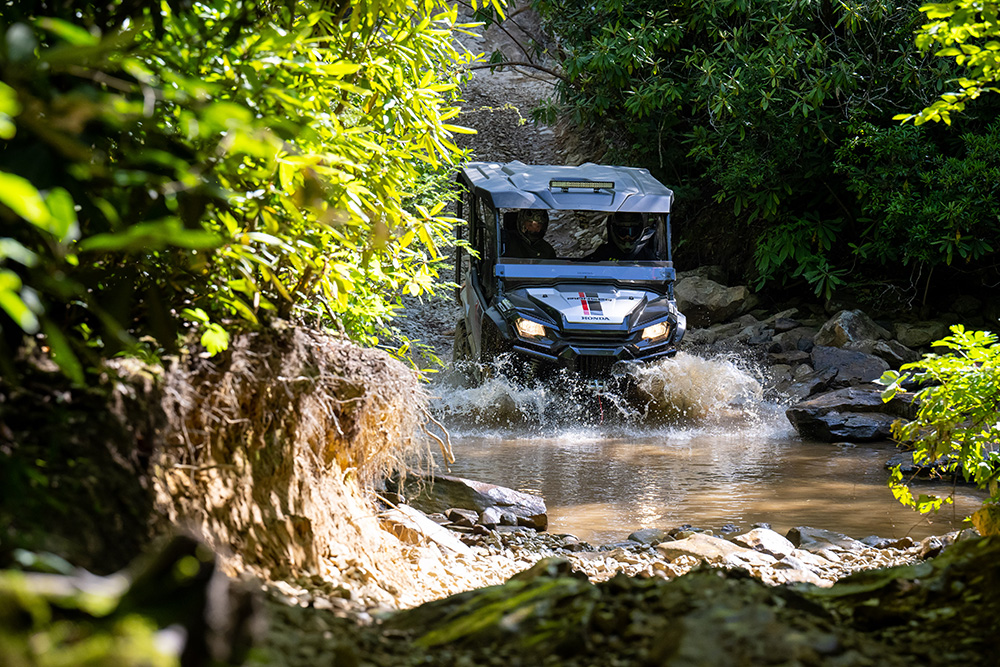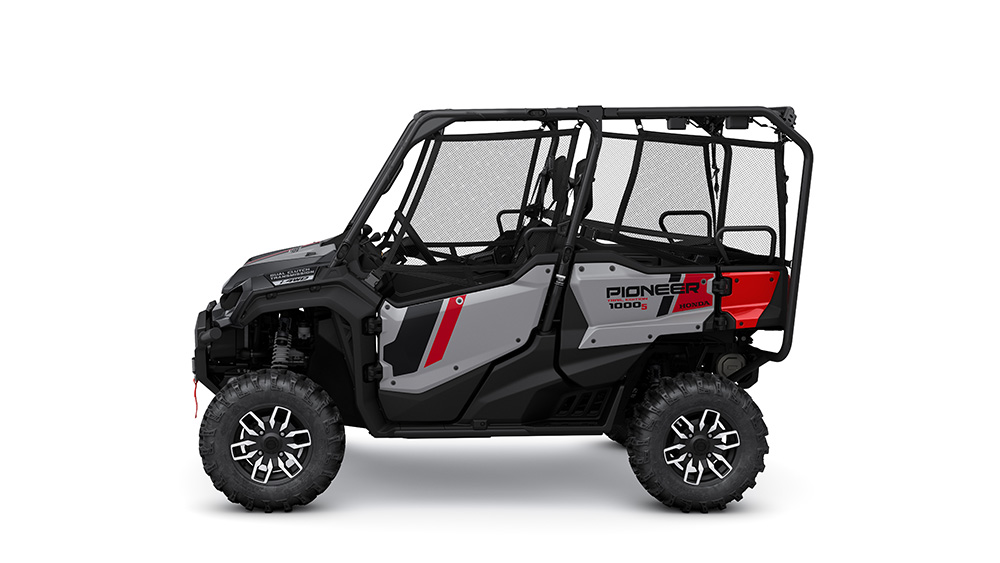
Engine:
Honda’s engineering team decided to inject some sport DNA in the Pioneer’s powertrain. The engine is a 999 cc liquid-cooled parallel-twin four-stroke engine with a Unicam cylinder-head and four valves per cylinder. It’s like a pair of CRF450R engines placed side by side, and detuned a little bit for a longer service life. Unicam is Honda speak for a combination of direct cam-on-bucket and forked rocker arm valve operation. This combo allows them to have the efficiency of four valves per cylinder without the cost, weight, or complexity of dual overhead cam systems. Unicam has been a Honda staple technology for decades.
Honda updated valve timing and throttle-body settings last year to offer more punch in the mid-to-upper rev range without sacrificing the signature Honda smoothness. Honda bumped the Pioneer’s tow rating with the increase in power, now rated at 2,500 lbs.
Honda’s engineers chose to turn the engine sideways in the Pioneer, which allows the driveshafts to spin in the same direction as the crankshaft. Reducing right angles increases the efficiency of the drivetrain, allowing more power to be transmitted to the wheels instead of getting lost turning extra parts. This is called longitudinal mounting.
Transmission/Drivetrain:
In a category flooded with CVT transmissions, Honda dares to stand out with the Pioneer’s 6 speed dual clutch transmission. No rubber belts here, just two gear shafts side by side, actuated by two electronically controlled clutches that allow the Pioneer to seamlessly shift between gears at lightning-quick speeds.
Honda’s transmission is a true DCT, similar to the one found in the Talon and many European sports cars. It received tuning updates last year along with the engine re-tune, and it smoothed out the Pioneer’s shifting behavior quite a bit. The transmission offers two modes, Standard and Sport, with Sport sharpening up the response and letting the revs hang longer before upshifting. Manual mode with paddle shifting can also be selected, giving the Pioneer pilot ultimate control over the DCT.
Honda’s four wheel drive system is all shaft-driven, with newer models receiving the i-4WD system on some trim levels. Short for Intelligent Four-Wheel Drive, i4WD is an electronically-controlled system that incorporates front and rear wheel drive, differential locking control, and individual wheel speed control by brake. The Pioneer’s onboard computer can manage all of these systems simultaneously, and with the help of wheel speed sensors, can apply force to the wheels with the most traction. For all but the most hardcore off-roaders, this means an easy “put it in 4 and go pretty much anywhere” level of climbing traction.


